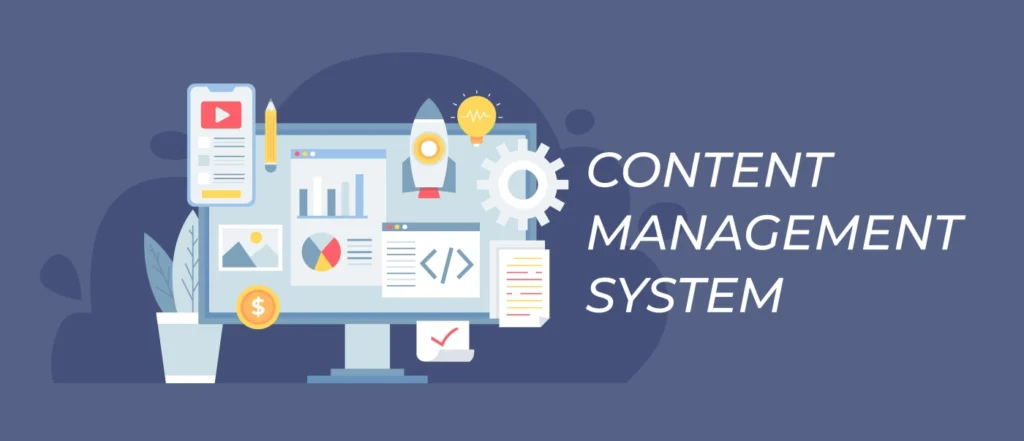If you’ve ever tried to build a website from scratch, you know it’s not exactly a lazy Sunday afternoon activity. Writing endless lines of code just to get a page to load… not fun. That’s where a CMS (Content Management System) comes in — it’s basically your website’s control room, minus the headache.
I’ve been working with CMS platforms for years, from small mom-and-pop bakery sites to full-scale corporate portals. And let me tell you, the choice of CMS can make or break how smooth your web journey is. So let’s break it down in plain English.
First things first — what is a CMS?
A CMS is software that lets you create, manage, and update your website without writing every single piece of code yourself. Imagine it as a content kitchen — you’ve got your recipes (templates), ingredients (content), and tools (plugins) ready to help you whip up a website in hours, not weeks.
Instead of firing up a code editor, you log into a dashboard, click a few buttons, type your content, and hit “Publish.” Done.
The big players — Different CMS platforms
Not all CMS platforms are cut from the same cloth. Over the years, I’ve worked with quite a few, and each has its own personality. Let’s meet the most popular ones.
1. WordPress.org (Self-hosted)
If CMS platforms were high school students, WordPress would be the overachiever — running the debate club, captain of the football team, and still managing straight A’s.
- Who it’s for: Blogs, business sites, eCommerce — basically anything.
- Why I love it: Endless customization, thousands of plugins, and you own your site.
- Heads-up: You need to set up hosting and do the occasional update.
- Cost: Free, but hosting and premium tools cost extra.
2. Wix
Wix is like the IKEA of websites — drag, drop, done.
- Who it’s for: Beginners who want quick results.
- Pros: No coding, templates ready to go, hosting included.
- Cons: Not great if you want deep customization later.
3. Squarespace
Squarespace is the artist in the group — clean, beautiful, minimal.
- Who it’s for: Photographers, designers, creative brands.
- Pros: Gorgeous templates, easy to set up.
- Cons: Limited flexibility and integrations.
4. Shopify
If your goal is selling online, Shopify is the specialist.
- Who it’s for: Online stores of any size.
- Pros: Secure payments, inventory tools, shipping integrations.
- Cons: Not ideal for non-eCommerce projects.
5. Drupal
Drupal is the tech-savvy cousin who loves puzzles. Powerful, but not for everyone.
- Who it’s for: Large, complex websites with custom needs.
- Pros: Extremely flexible.
- Cons: Steeper learning curve.
6. Joomla
Joomla sits somewhere between WordPress and Drupal — flexible but a little more technical than a beginner might want.
- Who it’s for: Businesses that need multilingual or custom functionality out of the box.
So, which CMS is the best?
Here’s the truth: the “best” CMS is the one that fits your needs today and grows with you tomorrow.
- Running a blog? Go WordPress.
- Selling online? Shopify or WooCommerce (on WordPress).
- Want something beautiful and quick? Squarespace or Wix.
And the easiest CMS to use?
If we’re talking “no learning curve,” Wix takes the crown. Squarespace comes in a close second. WordPress is a bit like learning to drive a manual car — a little tricky at first, but once you get it, you’ll wonder why you didn’t start sooner.
How I choose for my clients
When I help clients pick a CMS, I look at:
- Their budget — one-time setup or monthly fees?
- Future growth — will the site expand in size and features?
- Team skills — who will manage it later?
- SEO needs — some platforms give more control than others.
Final thoughts
A CMS is not just a tool — it’s the foundation of your digital presence. Pick the wrong one, and you’ll be fighting it for years. Pick the right one, and you’ll actually enjoy updating your site.
If I had to choose just one for most projects? I’d go with WordPress.org — it’s flexible, SEO-friendly, and grows with your needs. But hey, I’ve also seen clients thrive on Wix and Shopify. It’s all about the fit.



